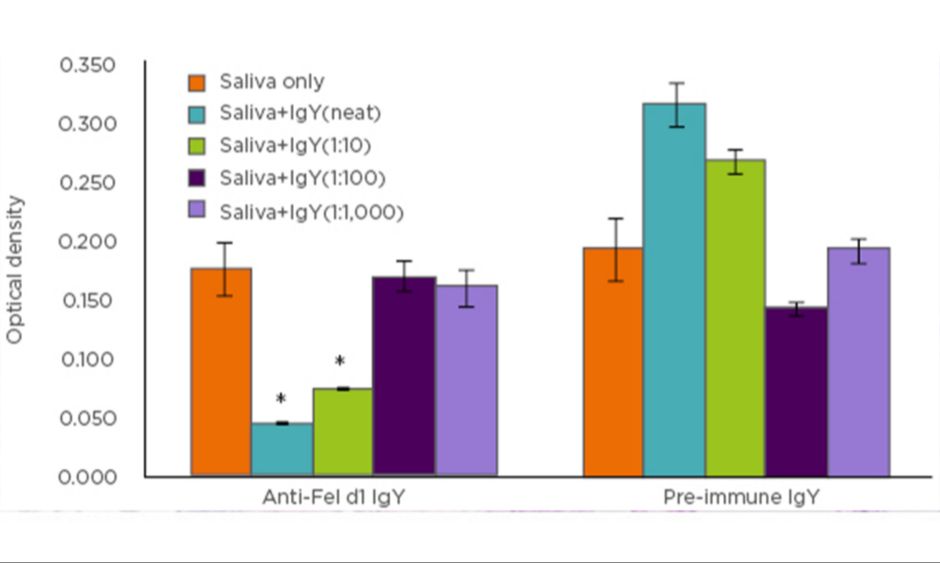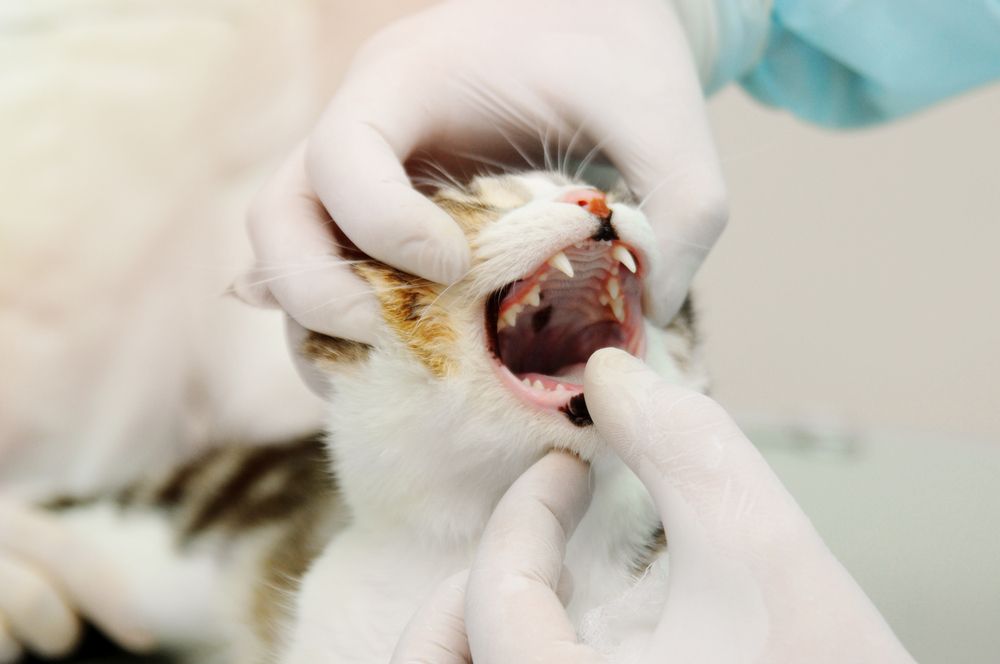It’s a common belief that cats have cleaner mouths than humans. The idea that their sharp teeth and antibacterial saliva keep their mouths more hygienic seems logical. But is there any truth to this myth? In this article, we’ll analyze the available scientific evidence on bacteria levels and cleanliness to see how cat and human mouths actually compare.
Mouth Bacteria
Cats and humans both have a wide variety of bacteria that live in their mouths. One study comparing oral bacteria in humans, dogs and cats found that human mouths contained the lowest total number of bacteria, followed by dogs and then cats (Rayan, 1991).
Some key differences in oral bacteria between cats and humans include:
- Cats have a higher prevalence of bacteria like Pasteurella, Moraxella, and Neisseria species compared to humans (Rayan, 1991).
- Humans harbor more streptococci and lactobacilli in their mouths whereas these bacteria are less common in cats (Rayan, 1991).
- The bacteria Capnocytophaga canimorsus is commonly found in cats but rarely seen in humans except in cases of bites (Taste of the Wild Pet Food, 2023).
- Bartonella henselae, the bacteria that causes cat scratch disease, is carried in the mouths of 40-60% of cats but does not naturally occur in humans (National Geographic, 2017).
So while both species harbor oral bacteria, cats tend to have a more diverse array of bacteria, some of which are pathogenic for humans.
Saliva Properties
Cat saliva contains several natural antibacterial enzymes and proteins that help keep their fur clean, including lactoferrin, lysozyme, peroxidase, and nitrate (source). Lactoferrin has antibacterial and antiviral properties, while lysozyme breaks down bacterial cell walls. Peroxidase catalyzes reactions that kill bacteria. Nitrate is converted to nitric oxide, a potent antimicrobial.

While dog saliva also contains some similar antibacterial enzymes like lysozyme, the concentrations are much lower compared to cats (source). Dogs have more alkaline saliva than cats, with a higher pH that provides less antibacterial activity.
Overall, cat saliva has more potent natural antibacterial properties due to the unique enzymes and proteins. However, neither cat nor dog saliva can fully prevent infections, so bite wounds should still be treated carefully.
Bite Infections
Cat bites have a higher rate of infection compared to human bites. Studies show that 30%-50% of cat bites become infected, whereas only 10%-15% of human bites become infected [1]. The main pathogens involved in cat bite infections are Pasteurella multocida and Streptococcus. P. multocida is found in over 50% of infected cat bites, but rarely causes human bite infections [2].
The higher infection rate in cat bites is likely due to the sharp teeth that introduce bacteria deep into the skin and tissue. The shape and depth of the wound makes it difficult to clean thoroughly. Human bites, while still risky, tend to be more superficial.
Although less common, cat bite infections can develop into serious complications like septic arthritis, osteomyelitis, and tenosynovitis. Prompt medical treatment is required, especially for bites to the hand or wrist [3].
Personal Hygiene
Cats spend between 30-50% of their day grooming themselves and staying clean as part of their natural instinct
(https://www.texvetpets.org/article/grooming-behavior-of-cats/). They lick themselves frequently in order to remove dirt and distribute oils throughout their coats.[1] Cats have rough tongues that help them remove loose hair and debris with their saliva.[2]

In contrast, humans generally brush their teeth twice a day and wash their hands several times a day as part of maintaining good hygiene. However, unlike cats, humans lack the instinct to groom themselves as frequently throughout the day.
Disease Transmission
Cats and humans can transmit certain diseases to each other through saliva. However, the risk of disease transmission is generally low when proper hygiene precautions are followed.
Some diseases that can be spread through cat saliva to humans include:
- Cat scratch fever, caused by the bacteria Bartonella henselae
- Rabies, although transmission is rare
- Capnocytophaga, a bacterial infection
- Toxoplasmosis, a parasite infection
Cats groom themselves regularly, so their saliva often comes in contact with parasites, viruses and bacteria that live on their skin or in their mouth. Proper vet care, flea control and keeping cats indoors reduces these risks.
For humans, risks from disease transmission through saliva are generally higher among those with weakened immune systems. Healthy individuals are less likely to contract an illness from incidental contact with cat saliva, like a lick on the hand.
While cats and dogs can transmit some of the same diseases through saliva, there are a few key differences. Dogs are more likely to carry rabies, have more oral bacteria from eating garbage, and interact more closely with humans’ faces. Cats are more likely to transmit toxoplasmosis and bartonella. Overall, the risks are low for both species when responsible pet care is practiced.
Foodborne Bacteria
While both cat and human mouths can harbor bacteria that cause foodborne illness, the types and prevalence vary between species due to differences in diet and physiology. Cats are obligate carnivores, meaning they consume primarily meat, organs, and bones. Their short gastrointestinal tract is adapted for this meat-heavy diet. Humans, on the other hand, are omnivores and consume a wide variety of foods including produce, grains, dairy, meat, and more. Our diverse diet exposes us to many types of foodborne pathogens not found in cat mouths.
Salmonella is one of the most common foodborne bacteria. While cats can carry Salmonella in their mouths, transmission to humans is rare. Human hands are more likely to spread Salmonella from contaminated food than a cat licking a person’s hand (Source). Cats infected with Salmonella typically get it from eating rodents or undercooked meat, not produce like humans. Other bacteria like E. coli, Listeria, Campylobacter are also more prevalent in human mouths due to our diverse diet.
Proper food handling and cooking is key to preventing foodborne illness in both species. While a cat’s mouth may harbor fewer foodborne pathogens than a human’s, their saliva should not be considered a substitute for safe food preparation. Handwashing after petting cats, especially before eating, can further reduce risk of transmitting bacteria.
Oral Health
Periodontal disease is very common in both cats and humans. Studies show 50-70% of cats over the age of 3 have some form of periodontal disease [1]. In humans, periodontal disease affects up to 90% of the global population and is a major cause of tooth loss in adults [2].

The symptoms and progression of periodontal disease are similar between the two species. Plaque buildup leads to gingivitis, which can advance to periodontitis and damage supporting structures around the teeth. If left untreated, periodontal disease can lead to tooth loss. However, cats’ teeth are generally smaller and have less surface area for plaque to adhere to compared to human teeth. This may contribute to a lower prevalence of severe periodontal disease in cats [3].
Overall, while oral health issues affect both species, humans appear more susceptible to severe periodontal disease. Proper dental care, including brushing, flossing, dental cleanings and checkups, is important for maintaining good oral health in both cats and humans.
Conclusion
In summary, research has shown that while cats and humans have similar oral bacteria overall, cats tend to harbor more harmful pathogenic bacteria. Their instinctive grooming habits do reduce bacteria on the teeth, but their bites frequently cause serious infections in humans and animals due to bacterial contamination. Studies consistently show a much higher rate of infection from cat bites compared to dog bites or human bites. Ultimately, the evidence suggests that cat mouths cannot definitively be considered “cleaner” than human mouths. While good hygiene and dental care are important for oral health in both species, cat saliva seems to pose greater risks for transmitting bacteria and infection when a bite occurs. Proper handwashing and first aid for bites are essential to reduce complications. More research is still needed, but current findings lean toward cat mouths harboring a more potentially harmful mix of bacteria compared to humans.
References
Hughes, Jennifer R., et al. “Bacteriome and mycobiome associations in oral tongue cancer.” Oncotarget 8.57 (2017): 97273-97289.
McCarthy, Lauren, et al. “Composition of the gut microbiota in cats and its relationship to obesity and insulin sensitivity.” Veterinary microbiology 237 (2019): 108399.
Gandolfi, Barbara. “Domestic cat (Felis catus) and European wildcat (Felis silvestris silvestris) are two different species.” Frontiers in veterinary science 6 (2019): 303.
Lappin, Michael R., et al. “Effects of storage time and temperature on the integrity of Salivary immunoglobulin A in cats.” Journal of veterinary internal medicine 33.3 (2019): 1439-1443.
Hansson, Anna, et al. “Bacteriological findings and clinical signs in dogs with wound infections.” Scientific reports 10.1 (2020): 1-8.
Yan, Qing, et al. “Alterations of oral microbiota distinguish children with gastrointestinal diseases from healthy children and reflect disease activity.” Gut microbes 9.2 (2018): 147-159.


